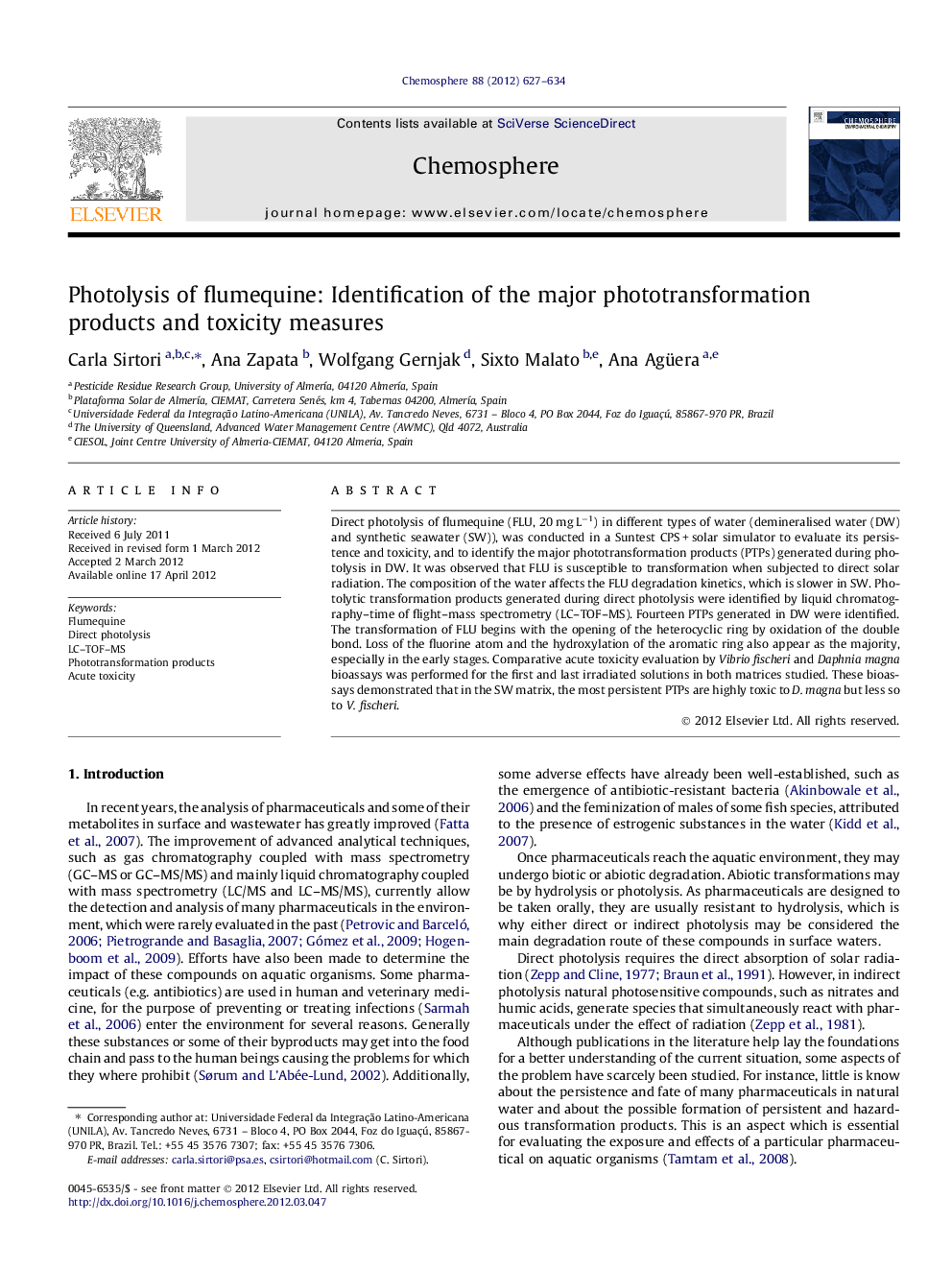| Article ID | Journal | Published Year | Pages | File Type |
|---|---|---|---|---|
| 4410311 | Chemosphere | 2012 | 8 Pages |
Direct photolysis of flumequine (FLU, 20 mg L−1) in different types of water (demineralised water (DW) and synthetic seawater (SW)), was conducted in a Suntest CPS + solar simulator to evaluate its persistence and toxicity, and to identify the major phototransformation products (PTPs) generated during photolysis in DW. It was observed that FLU is susceptible to transformation when subjected to direct solar radiation. The composition of the water affects the FLU degradation kinetics, which is slower in SW. Photolytic transformation products generated during direct photolysis were identified by liquid chromatography–time of flight–mass spectrometry (LC–TOF–MS). Fourteen PTPs generated in DW were identified. The transformation of FLU begins with the opening of the heterocyclic ring by oxidation of the double bond. Loss of the fluorine atom and the hydroxylation of the aromatic ring also appear as the majority, especially in the early stages. Comparative acute toxicity evaluation by Vibrio fischeri and Daphnia magna bioassays was performed for the first and last irradiated solutions in both matrices studied. These bioassays demonstrated that in the SW matrix, the most persistent PTPs are highly toxic to D. magna but less so to V. fischeri.
► Direct photolysis of flumequine in two different water matrices was evaluated. ► Fourteen phototransformation products were generated during direct photolysis. ► Acute toxicity demonstrated that phototransformation products are highly toxic.
